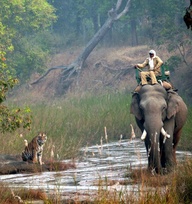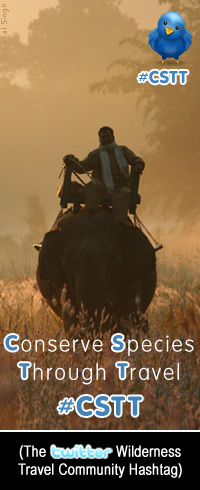This week we feature the importance of segregation of waste in protected areas. In most tourism visited wildlife reserves, the main aim of park management has been to curb visitors destroying the landscapes by preventing littering garbage, plastic bags and throwing away items which could potentially be harmful to wildlife and fauna present in the area.
The focus of having separate bins is to divide and sort the wastes into dry and wet for collection. Dry waste (Non Biodegradable) can be tin cans, plastic or glass bottles, metal, cardboard and paper whereas wet waste comprises items which can be biodegraded in land such as vegetable peels, left over food, egg shells, leaves etc.
The biggest problem facing degradable wastes is a decrease in landfill sites left available in many parts of the world. As less sites are left to defuse biodegradable wastes, the volume of waste is on an increase which is causing massive pressure and concerns on governments and local authorities. This concern is environmentally as well as economically damaging.
This week on our ”Wild Wednesday” we highlight two pictures where management is taking steps to encourage visitors to use these segregation points.
The above photo shows three bins kept for disposal at Dhikala Tourism Zone ‘Corbett Tiger Reserve , India.’ This park has a high bed capacity each night resulting in a large number of visitors. These collection bins may not be enough, nevertheless, it is a start to this segregation process.
The Giant’s Causeway in Northern Ireland gets approximately over 100,000 visitors each year. That is certainly a large number to visit and tourist boards the world over should look into segregation as one of their prime segments in management plans. With the population said to increase and reach over 7 billion people worldwide, these sites will have to cater to the needs of large number of cafes, bars, hotel accommodations and eateries. The prime target for management planners has to be sustainable whereby visitors use these destinations for future years.
Segregation is the most important step in this process of recycling and waste management services. The next process is disposing the garbage collected and that itself is a key element which needs to be thought of carefully before the initial segregation phase.
—————-
Do You Have a Photo / Story or Article that can be a feature on our Wild Wednesday section? Submit your feature to us and we will highlight it on our Wild Wednesday post ! Your featured image / article or story can help inspire others to protect and educate them about the wild.





























 Twitter
Twitter Facebook
Facebook RSS
RSS
Comments
Powered by Facebook Comments